Lane Cove cabins
Lane Cove National Park
Learn more
Learn more about why this park is special
Lane Cove cabins is in Lane Cove National Park. Here are just some of the reasons why this park is special:
Native plants and animals
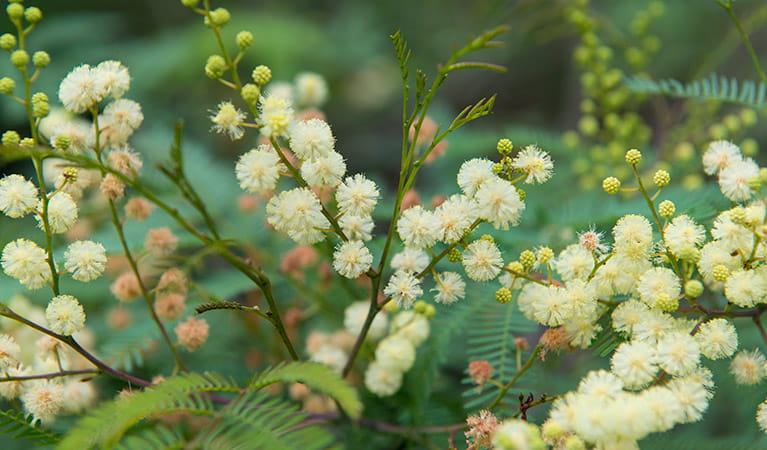
The landscape of Lane Cove National Park is remarkable given that it sits within a large urban environment. You'll see eucalypt forests, casuarina woodland and saltwater wetlands, each of which is home to a range of different plants, animals and birds. Echidnas are mainly nocturnal, but sometimes venture out during the day when the weather is mild you'll have to be quick and quiet to catch a glimpse though, the slightest noise will have them curling up into a ball for protection and camouflage. If you're walking along the river and you think you've spied something that looks a little unusual, it could very well be an eastern water dragon - look for its distinctive black stripes and crest of enlarged spiny scales along its body.
- Forest therapy walk in Lane Cove National Park Slow down and immerse yourself in nature on this peaceful guided forest therapy walk in Sydney’s Lane Cove National Park.
- Great North walk - Lane Cove National Park Passing through Lane Cove National Park, this multi-day hike offers stunning scenery across Sydney, the Hunter Valley and Newcastle. Tackle part of the track for an easy day walk.
Sydney’s backyard
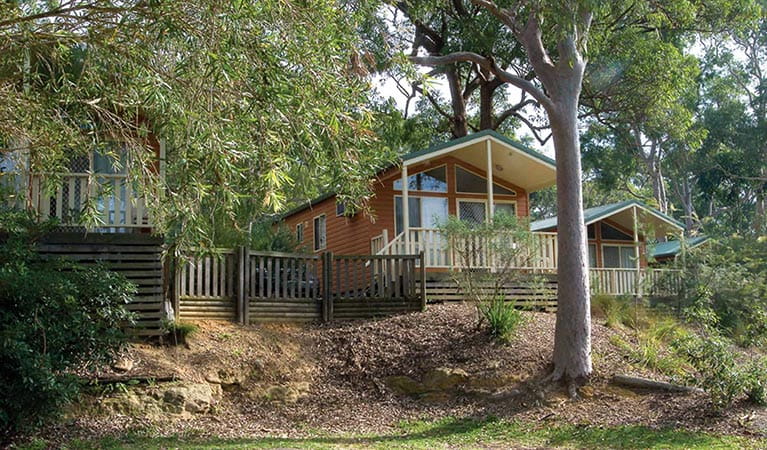
Lane Cove National Park sits on the doorstep of Australia’s largest city, offering a wealth of opportunities for Sydneysiders and visitors to experience nature and spend time with family and friends. With opportunities for bushwalking and biking, kayaking and boating, picnicking and playing, you're guaranteed to want to visit again and again and it’s so close that you can. Did you know you can even go camping at Lane Cove National Park? For bush camping in an urban environment, head to Lane Cove River Tourist Park on the south western side of the park.
- Carter Creek picnic area Book Carter Creek picnic area for your next celebration. There are shaded picnic tables and gas barbecues. Plus it's right by the river.
- Pennant Hills West Pymble fire trail Ride the Pennant Hills to West Pymble fire trail for scenic views of Sydney and bushland. There's plenty of variety with technical parts and steep sections.
Connection to Country
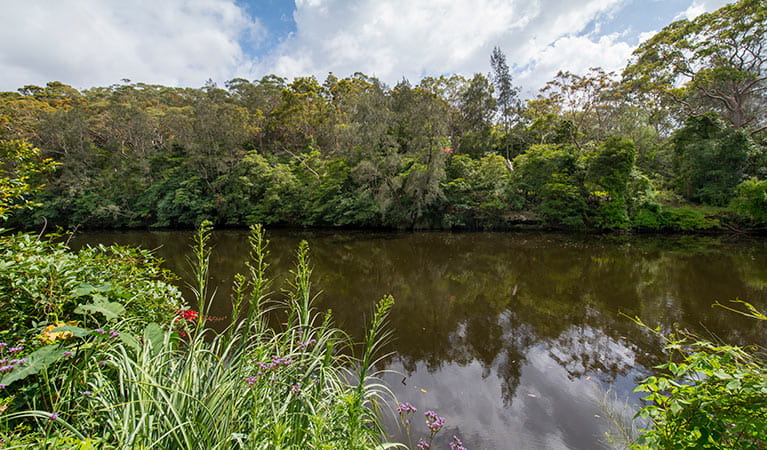
Lane Cove National Park is part of the traditional lands of Aboriginal people whose Country extended from around Newcastle to Sydney Harbour. They lived primary by the water; fishing and hunting in the waters and hinterlands and harvesting food from surrounding bushland. The park protects a number of ancient Aboriginal sites today, some of which you may notice while exploring the park.
Plants and animals protected in this park
Animals
-
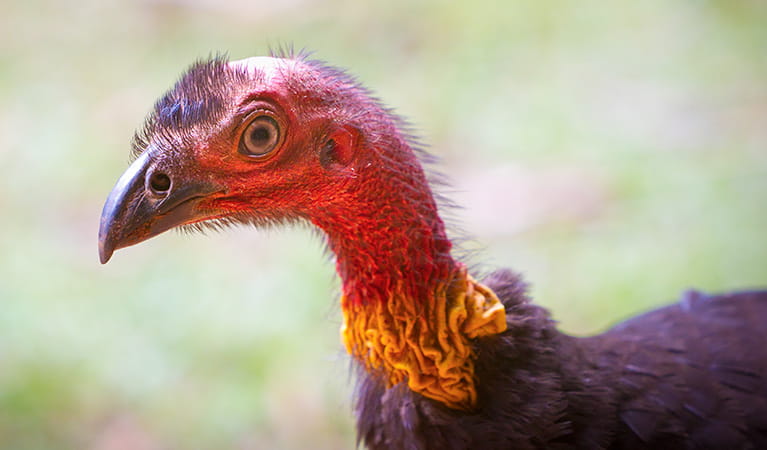
Australian brush turkey (Alectura lathami)
The Australian brush turkey, also known as bush or scrub turkey, can be found in rainforests along eastern NSW. With a striking red head, blue-black plumage and booming call, these distinctive Australian birds are easy to spot while bird watching in several NSW national parks.
-
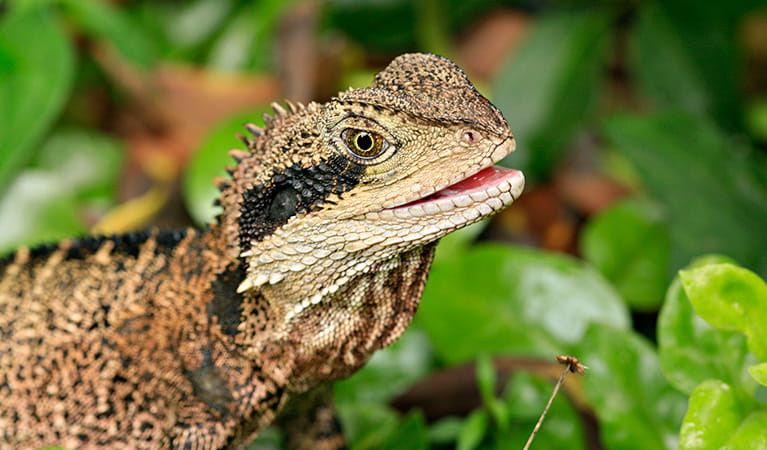
Eastern water dragon (Intellagama lesueurii lesueurii)
The eastern water dragon is a subaquatic lizard found in healthy waterways along eastern NSW, from Nowra to halfway up the Cape York Pensinsula. It’s believed to be one of the oldest of Australian reptiles, remaining virtually unchanged for over 20 million years.
-
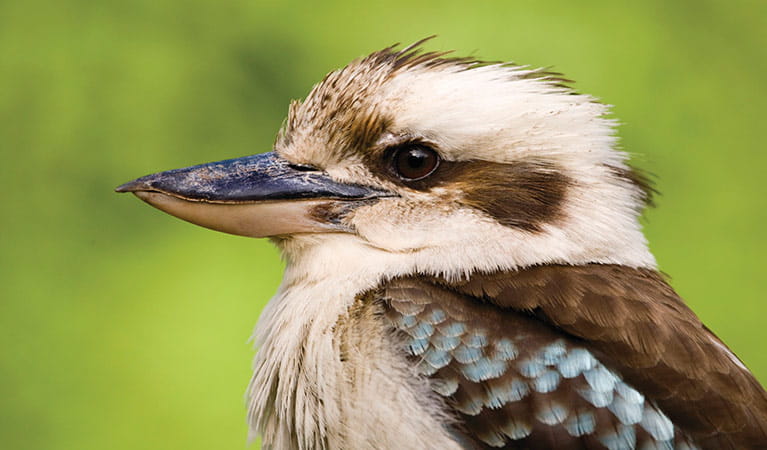
Kookaburra (Dacelo novaeguineae)
Of the 2 species of kookaburra found in Australia, the laughing kookaburra is the best-known and the largest of the native kingfishers. With its distinctive riotous call, the laughing kookaburra is commonly heard in open woodlands and forests throughout NSW national parks, making these ideal spots for bird watching.
-
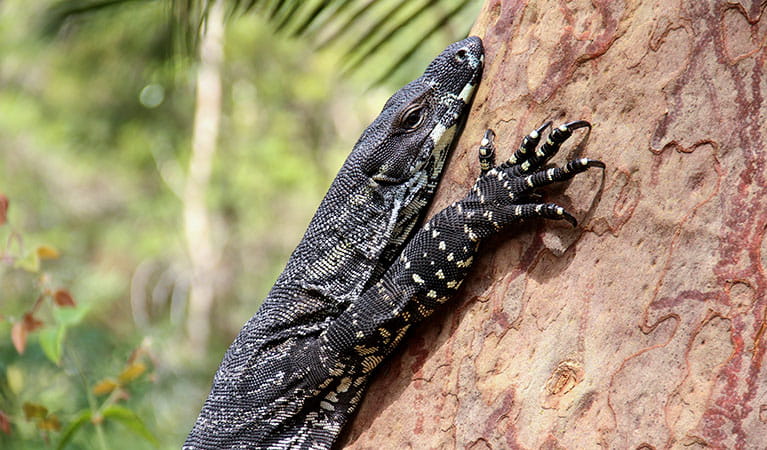
Lace monitor (Varanus varius)
One of Australia’s largest lizards, the carnivorous tree-dwelling lace monitor, or tree goanna, can grow to 2m in length and is found in forests and coastal tablelands across eastern Australia. These Australian animals are typically dark blue in colour with whitish spots or blotches.
-
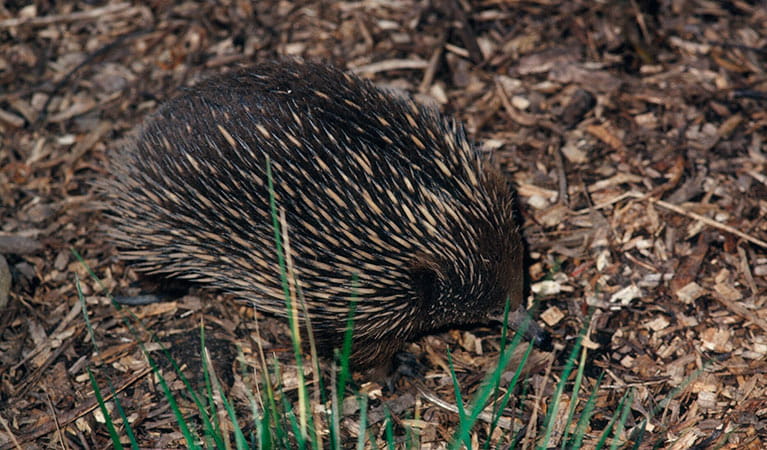
Short-beaked echidna (Tachyglossus aculeatus)
One of only 2 egg-laying mammals in the world, the short-beaked echidna is one of the most widespread of Australian native animals. Covered in spines, or quills, they’re equipped with a keen sense of smell and a tube-like snout which they use to break apart termite mounds in search of ants.
-
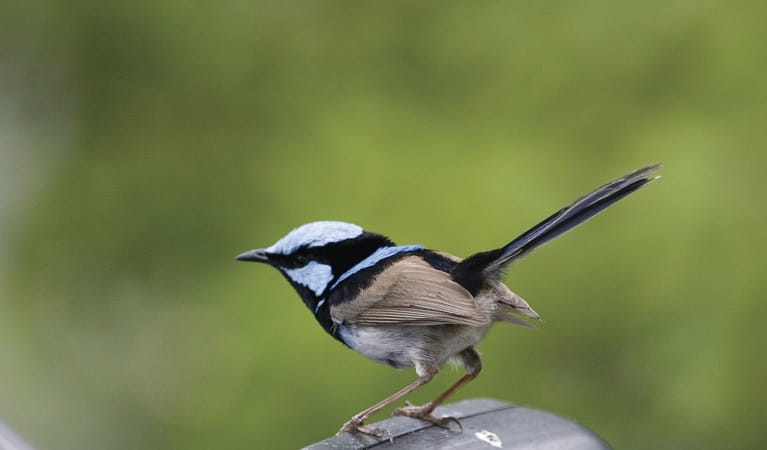
Superb fairy wren (Malurus cyaneus)
The striking blue and black plumage of the adult male superb fairy wren makes for colourful bird watching across south-eastern Australia. The sociable superb fairy wrens, or blue wrens, are Australian birds living in groups consisting of a dominant male, mouse-brown female ‘jenny wrens’ and several tawny-brown juveniles.
-

Swamp wallaby (Wallabia bicolor)
The swamp wallaby, also known as the black wallaby or black pademelon, lives in the dense understorey of rainforests, woodlands and dry sclerophyll forest along eastern Australia. This unique Australian macropod has a dark black-grey coat with a distinctive light-coloured cheek stripe.
Plants
-

Grass tree (Xanthorrea spp.)
An iconic part of the Australian landscape, the grass tree is widespread across eastern NSW. These Australian native plants have a thick fire-blackened trunk and long spiked leaves. They are found in heath and open forests across eastern NSW. The grass tree grows 1-5m in height and produces striking white-flowered spikes which grow up to 1m long.
-
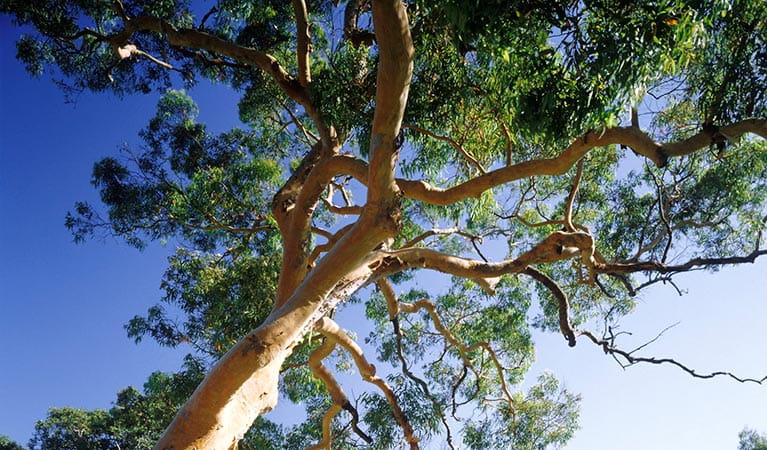
Smooth-barked apple (Angophora costata)
Smooth-barked apple gums, also known as Sydney red gum or rusty gum trees, are Australian native plants found along the NSW coast, and in the Sydney basin and parts of Queensland. Growing to heights of 15-30m, the russet-coloured angophoras shed their bark in spring to reveal spectacular new salmon-coloured bark.
-
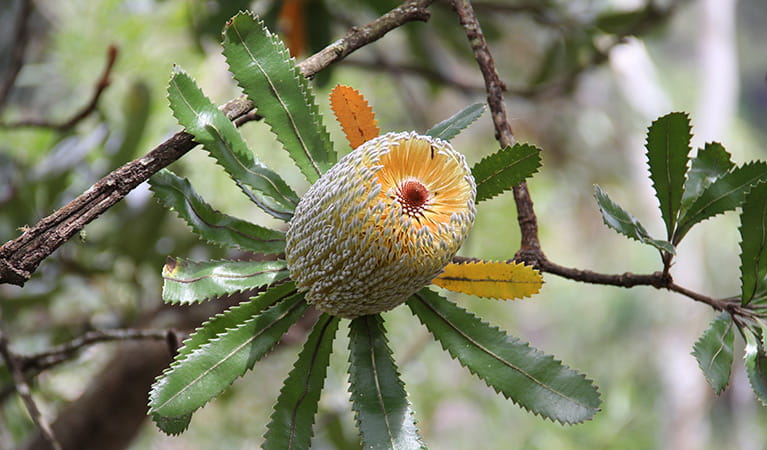
Old man banksia (Banksia serrata)
Hardy Australian native plants, old man banksias can be found along the coast, and in the dry sclerophyll forests and sandstone mountain ranges of NSW. With roughened bark and gnarled limbs, they produce a distinctive cylindrical yellow-green banksia flower which blossoms from summer to early autumn.
-
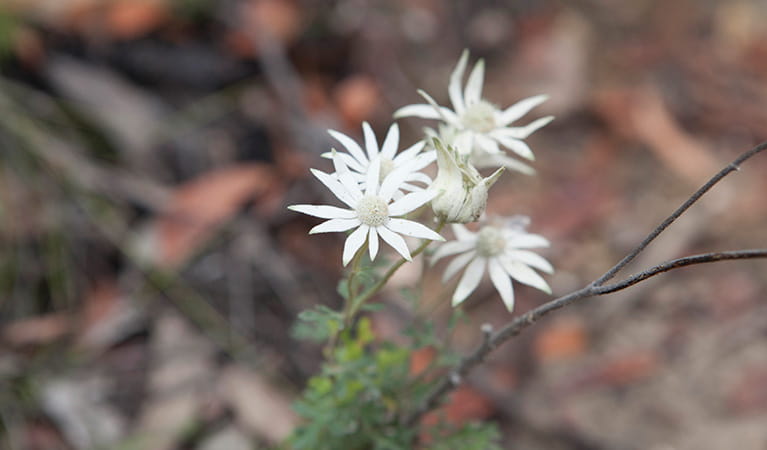
Flannel flower (Actinotus helianthi)
The delicate flannel flower is so named because of the soft woolly feel of the plant. Growing in the NSW south coast region, extending to Narrabri in the Central West and up to south-east Queensland, its white or pink flowers bloom all year long, with an extra burst of colour in the spring.
-
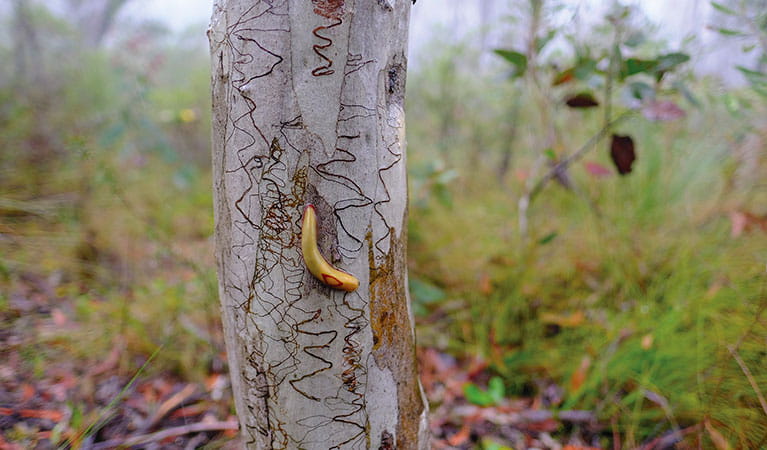
Scribbly gum (Eucalyptus haemastoma)
Easily identifiable Australian native plants, scribbly gum trees are found throughout NSW coastal plains and hills in the Sydney region. The most distinctive features of this eucalypt are the ‘scribbles’ made by moth larva as it tunnels between the layers of bark.
-
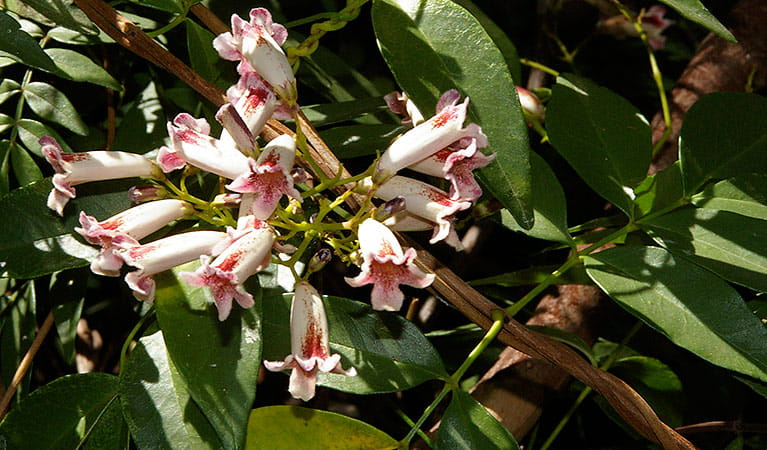
Wonga wonga vine (Pandorea pandorana)
The wonga wonga vine is a widespread vigorous climber usually found along eastern Australia. A variation of the plant occurs in the central desert, where it resembles a sprawling shrub. One of the more common Australian native plants, the wonga wonga vine produces bell-shaped white or yellow flowers in the spring, followed by a large oblong-shaped seed pod.
Look out for...
Old man banksia
Banksia serrata
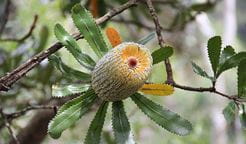
Hardy Australian native plants, old man banksias can be found along the coast, and in the dry sclerophyll forests and sandstone mountain ranges of NSW. With roughened bark and gnarled limbs, they produce a distinctive cylindrical yellow-green banksia flower which blossoms from summer to early autumn.